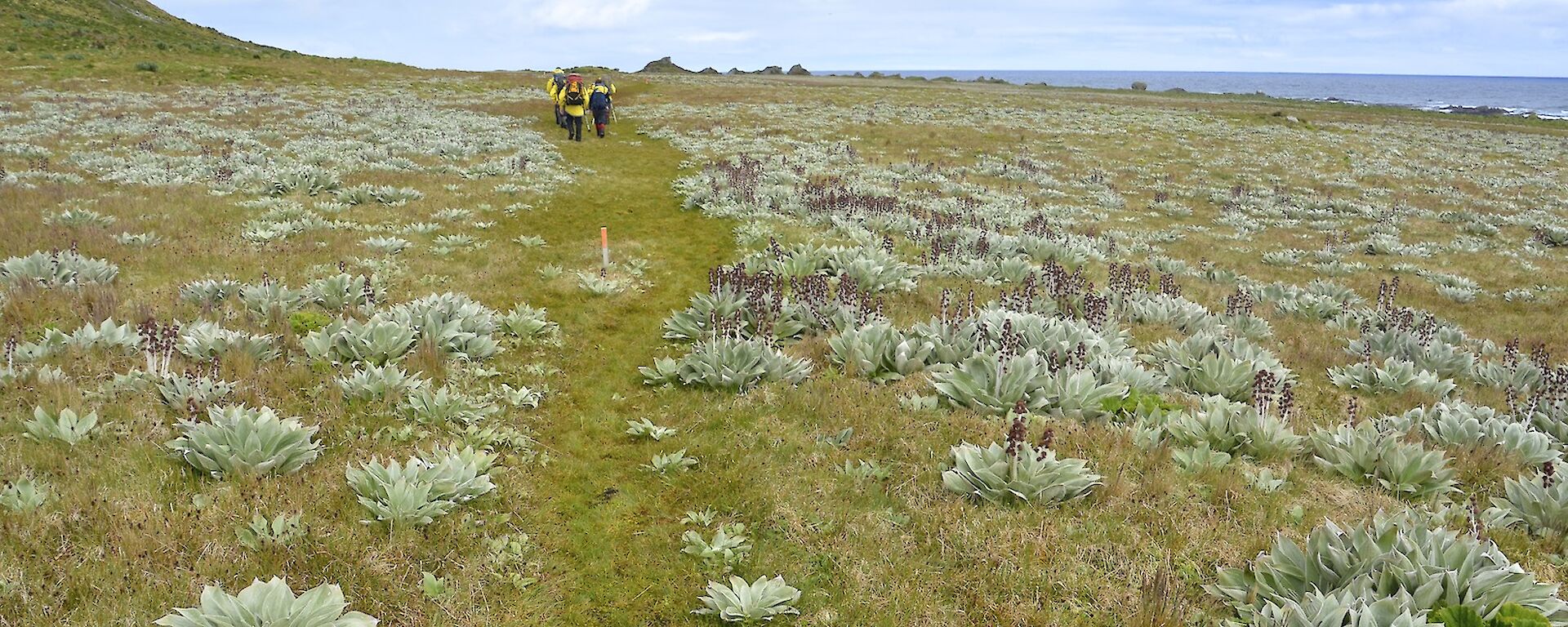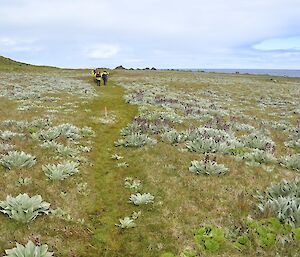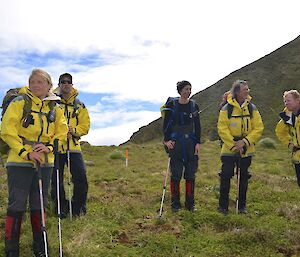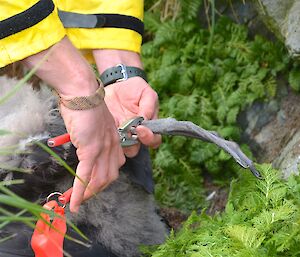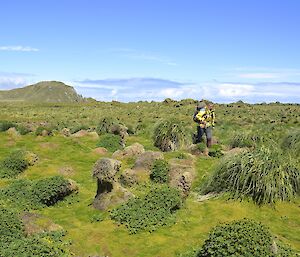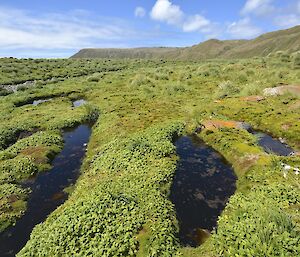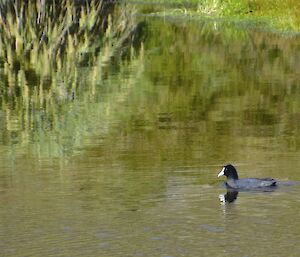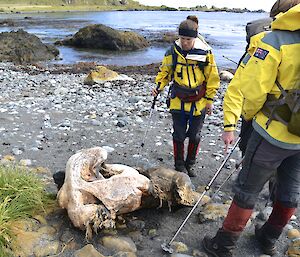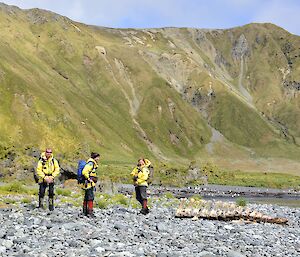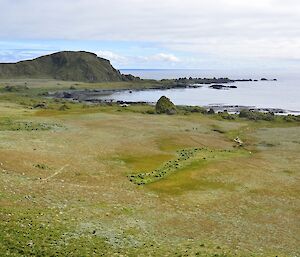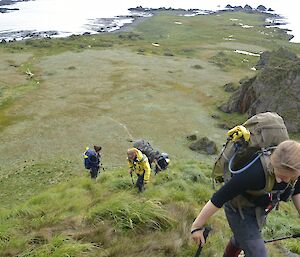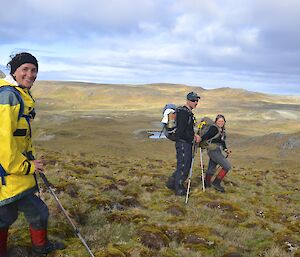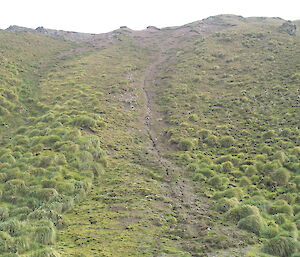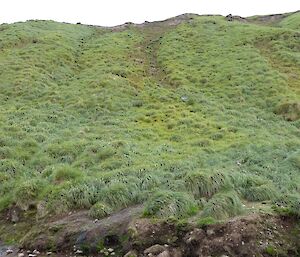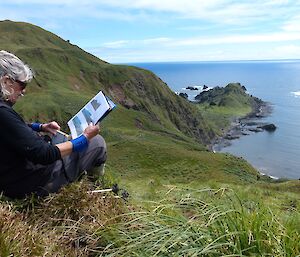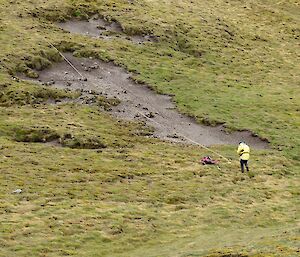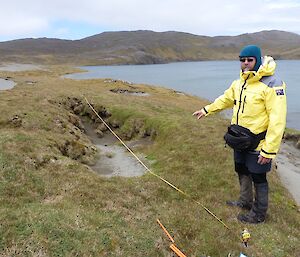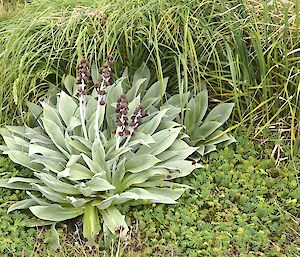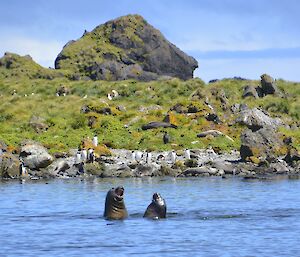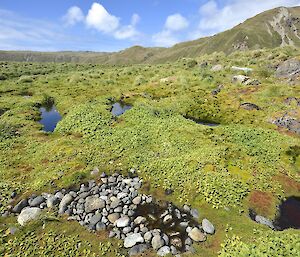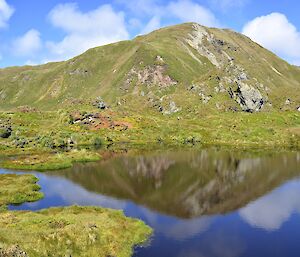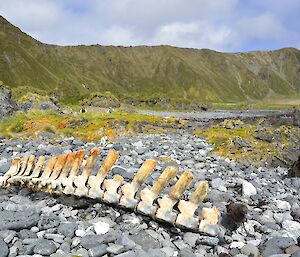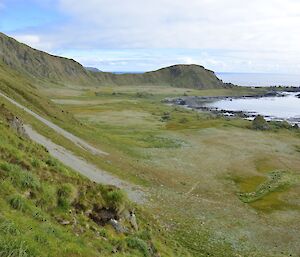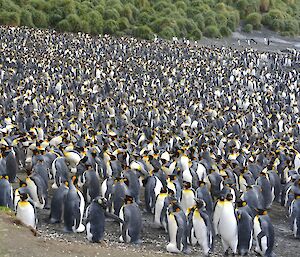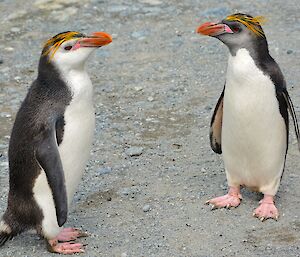Last week Clive and I volunteered to help out the albatross girls, Jaimie and Kate, and ranger Kris with the banding of northern giant petrel chicks. Mike, one of the MIPEP crew also came to lend a hand.
Clive and I were very fortunate to once again venture onto the Western featherbed Special Management Area (SMA). Access to this Special Management Area is restricted to researchers only from August 1st to May 31st as it helps to let seabirds breed undisturbed. Special approval is required from the Rangers to access these areas during the closed season. Volunteering to assist in some of the projects and programmes is a good way of getting to see different parts of the island away from the normal walking tracks.
As volunteers our job was to assist Jaimie, Kate and Kris as scribes to record data while they carried out banding of the chicks.
The northern giant petrels start breeding from early August and start laying eggs from mid-August to early September. The incubation is done by both sexes in shifts of 5 to 10 days. Incubation lasts for around 60 days, so chicks start to hatch mid-October to early November.
Both parents take turns (around 3 days) brooding over the chicks for around 17 to 19 days. The chicks fledge about 110 to 120 days after hatching, leaving the nest in February.
The job at hand was to check all nests, which had been identified during August and September. If a chick were on the nest a numbered metal identification band would be attached to one of its legs.
Bird banding is considered to be a very important aspect of the programme as it enables researchers to gather basic data on bird movements and habits. A data base search of one band recovered from a dead bird carcass earlier this year, revealed that the bird was approx 34years old. The bird body was located approx. 200m from where it was first banded! These birds are known to fly all around the southern subantartic.
We split into pairs — one person to attach the band the other to record the status of the nest (chick, empty or failed), the band number and state of plumage (5 states).
It was a picture perfect day when we left VJM just after 9am and made our way down the west coast and up on the featherbed to Elizabeth and Mary Point. Here we split into the pairs and systematically located the nests amongst the tussock — from GPS waypoints.
We stopped for lunch near the shore of Unity Bay. We had to re-apply sunscreen as it was a calm, warm and sunny day. After lunch we continued banding, ever slowly moving south. At around 4 pm it was deemed that we had done enough for the day. We then climbed the steep, arduous, steady jump-up the escarpment.
The weather was still perfect and at the top we had great views up and down the west coast, while the view to east was across the plateau and down to Island Lake.
It is here that the group split. Jaimie, Kate and Kris made there way back to VJM via the Island Lake track, while Mike escorted Clive and I across the plateau. Skirting the magical Island Lake and viewing it from high up on the ridge, gave added perspective of the incredible landscape we were walking through. Another highlight of the day. We eventually made our way to the Overland track. From there we made our way to Brothers Point hut, arriving at around 8:30pm.
In the hut we were treated to a tasty meal prepared by Leona. Though quite weary we reflected on the amazing day we had out in the field.

